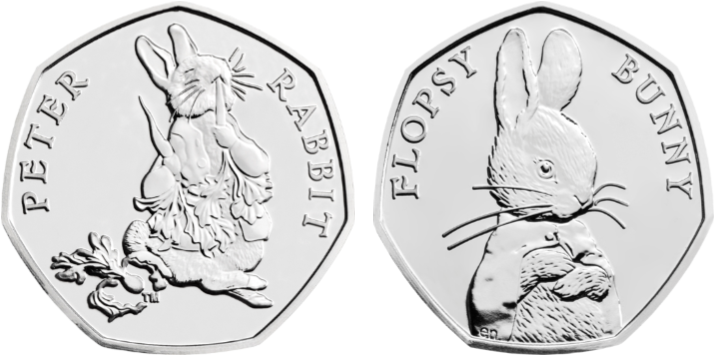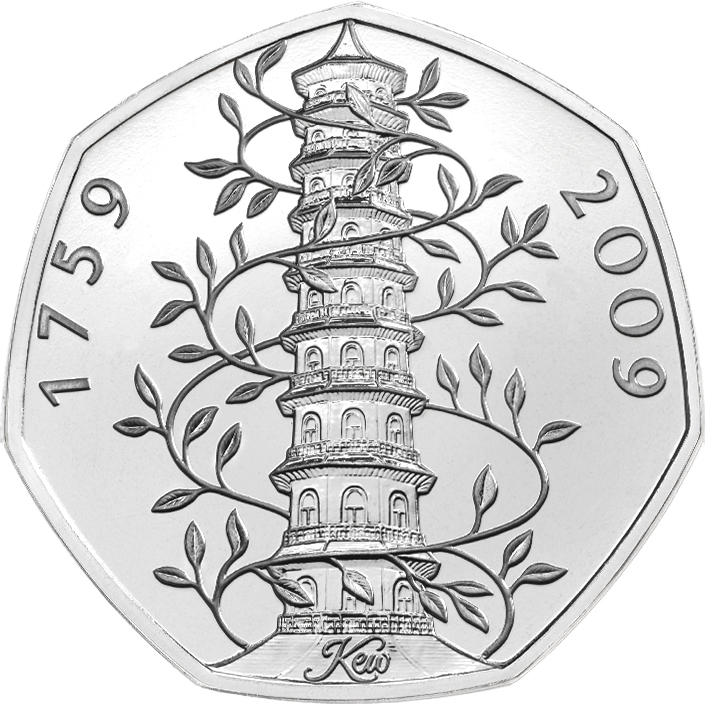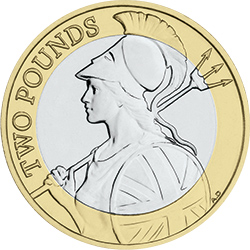Posts Tagged ‘Coin News’
The history of the ‘Ten Bob’ note – a world before the 50p coin…
Back in the 1960’s the 10 Shilling Note, or ‘ten bob’ as it was commonly known, would go pretty far – buying you 6 pints of beer, 10 loaves of bread, or 17 pints of milk.
Nowadays it’s hard to imagine the decimal equivalent, the 50p, buying so much. In fact, 50p can only just buy you one pint of milk today! And you can certainly forget that pint of beer!
But before the much loved 50p came along, the old 10 Shilling banknote had a fascinating history.
From being issued by the Government in a wartime emergency, changing colour to avoid forgery from the Nazis and eventually being replaced by the world’s most popular coin, it’s important that the history of the ten bob isn’t forgotten.
The Emergency Banknote
In August 1914, the British economy was in turmoil due to the instability caused by the oncoming war on the continent.
Bankers and politicians were desperately looking for ways to secure Britain’s finances and prevent the banks from collapsing.
The Government decided that a large supply of banknotes should be made available for the value of 10 Shillings, making it easy for the public to make small transactions.
However, The Bank of England was not able to prepare and print the required number of notes quickly enough, so the Government took the unprecedented step of deciding to issue the notes itself.

These banknotes became known as the Treasury banknotes and were unlike anything the British public had ever seen.
Until this point the lowest denomination banknote was £5, and in those days this was such a large sum that many people would never have seen or used a banknote before.
By issuing a 10 Shilling banknote, the Treasury created the first widely circulated banknotes in England.
The Wartime colour change
In 1928, the responsibility for printing 10 Shilling notes was transferred to the Bank of England.
However, not long afterwards, Britain once again found itself at war and again found its currency under threat.
During World War II, Nazi Germany hatched a plan to undermine British currency.
Through ‘Operation Bernhard’ they believed they had discovered a method to manufacture counterfeit ‘White Fivers’, and planned to distribute these in huge numbers to destabilise the British currency.
The Bank of England decided to take preventative action and, as a result, the 10 Shilling note was changed for the duration of the war to a distinctive pink and blue colour in an attempt to prevent counterfeiting.

It was also revolutionary in the progression of banknote technology by incorporating a metal security thread.
The Nazis couldn’t compete with this high level anti-forgery technology and hence the British 10 Shilling note held strong and supported the British wartime economy, as it had done since its conception.
The 50p revolution
After undergoing a colour change during the Second World War, the ten bob note reverted to its familiar red-brown until 1961, when a new design featuring a portrait of Queen Elizabeth II was introduced.
Despite a new design for the 10 Shilling note featuring Sir Walter Raleigh on the reverse being approved in 1964, as part of the process of decimalisation it was dropped in favour of the new fifty pence coin introduced in 1969.

The principle reason for the change was to save the Treasury money.
The notes had an average lifetime of around five months, whereas a coin could last for fifty years.
The 50p has since gone on to become the world’s most popular and collected coin, but nowadays few realise the fascinating history of its predecessor, the 10 Shilling banknote!
Do you remember the ten bob note? Let us know in the comments below!
If you’re interested in coin collecting, our Change Checker web app is completely free to use and allows users to:
– Find and identify the coins in their pocket
– Collect and track the coins they have
– Swap their spare coins with other Change Checkers

Sign up today at: www.changechecker.org/app
Rarest 50ps Revealed! 2018 Mintage Figure Update
Exciting news! The Royal Mint have revealed the latest mintage figures for 2018 coins!
Seven 50p coins entered circulation in 2018 and collectors across the nation have been debating how rare each one might be.
But now the official figures have been revealed and it looks like there are some particularly rare ones we should be looking out for…

The rarest Beatrix Potter 50ps
Collectors who have held on to their 2018 Beatrix Potter 50ps will be delighted to see that these coins have lower mintages than any of the previous Beatrix Potter coins issued in 2016 and 2017.
In fact, three out of the four Beatrix Potter 50ps released in 2018 are even rarer than the 2016 Jemima Puddle-Duck 50p – previously thought of as the rarest Beatrix Potter 50p in circulation!

With a mintage of just 1,400,000 the 2018 Peter Rabbit and 2018 Flopsy Bunny 50ps are sure to become incredibly sought-after amongst collectors, as they take joint second spot on our mintage figure chart (which excludes Olympic 50ps).
These two coins, alongside the 2018 Mrs Tittlemouse (mintage: 1,700,000) have pushed the 2017 Sir Isaac Newton (mintage: 1,801,500) off the podium.
Whilst the 2018 Tailor of Gloucester has a slightly higher mintage at 3,900,000 the other three coins in the 2018 series have only been pipped to the post by the UK’s rarest 50p in circulation, the Kew Gardens.
With a mintage of 210,000 this 50p is considered the holy grail of change collecting and dominates the Change Checker mintage figure charts and Scarcity Index.

What about the Olympic 50ps?
In 2012, the release of the Olympic 50p series kick started a collecting frenzy across the nation.
It’s estimated that around 75% of these coins have been removed from circulation by collectors which means they are incredibly sought-after, especially considering these 50ps have some of the lowest mintage figures in circulation…
Many of the Olympic 50ps have a mintage less than 2,000,000 with the rarest (the Olympic Football 50p) having a mintage of just 1,125,500.

Taking these rare 50ps into consideration, the 2018 Peter Rabbit and Flopsy Bunny coins would sit in joint sixth position, below the Kew Gardens, Football, Wrestling, Judo and Triathlon 50ps.
£2 Coin Update
As well as updating the 50p mintage figures, The Royal Mint also revealed that no £2 coins were issued into circulation last year.
There have been no new £2 coins issued into circulation since 2016, which may in part be due to the introduction of the new 12-sided £1 coin in 2017.
The new definitive £2 was released in 2015, replacing the Technology £2 with a Britannia design, but for the past two years it seems there has not been enough demand to issue this coin for circulation.

In fact, aside from the £1 coin, no new definitive coins were released at all last year, from the 1p to the £2 coin.
A-Z 10p update
Despite no definitive 10p coins entering circulation in 2018, The Royal Mint have confirmed mintage figures for the highly popular A-Z of Great Britain 10p coins.
From Angel of the North to Zebra Crossing, 26 new 10p designs were released in 2018 to celebrate what makes Britain British.

Initially, 2.6 million of these coins were released, followed by another 2.6 million later in the year.
However, up until now the individual mintages for each design had not been confirmed.
The mintage figure update now reveals that 220,000 of each design entered circulation in 2018, which makes the individual 2018 10p coins almost as rare as the Kew Gardens 50p…
Have you been lucky enough to find any of these coins in your change? It’s always exciting when new mintage figures are revealed and your realise just how rare the change in your pocket really is!
We’ll be updating the Change Checker Scarcity Index next month and it will be exciting to see how these new figures impact the index.
If you’re interested in coin collecting, our Change Checker web app is completely free to use and allows users to:
– Find and identify the coins in their pocket
– Collect and track the coins they have
– Swap their spare coins with other Change Checkers

Sign up today at: www.changechecker.org/app
Spot the difference! Variations in the 12 sided £1 explained
Since their introduction in 2017, a common query we get is people asking about variations in their 12 sided £1 coins.
Having read David Groom’s fascinating articles in Coin News Magazine, we’ve found the key facts which explain these variations, what to look for, and why they might have occurred.

We know that of the 1.75 billion 12 sided £1 coins struck for circulation between 2016 and 2022, roughly half a billion are dated 2016.
Of course, having such a high mintage figure must lead to varieties in design and quality of striking, however in the Coin News examination of just 40 randomly selected 12 sided £1 coins, an extraordinary number of varieties appeared…
Edges
Perhaps the most talked about variation with the 12 sided £1 is the milling on the edge of the coin, with ‘lefties’ being a common error in the milling process.


Obverses
Groom’s article suggested four clear variations can be found on the obverse of the coin, including the position of the design and text.




Reverses
Groom also highlighted the four clear features of difference on the reverses of the £1 coins.




Misalignment
One of the most common variations seems to be misalignment of the coins, particularly where the outer and inner sections do not align properly.

Dates
We’ve spoken before in our blog about the dual-dated £1 coins, with one such coin being valued at £3,000. Groom also mentions that many examples of the 2016 pound coin have the date numbers very poorly struck, making the date hard to read.

Royal Mint Trial Coins
Trial coins are issued when new coin specifications are being tested, but they should not enter circulation. These coins feature the words ‘The Royal Mint’ and ‘Trial Piece’.
Back in 2018, a 2015 dated trial 12-sided £1 coin sold on eBay for a whopping £500! However, looking at eBay listing in 2025, these coins are selling for much more reasonable prices, with the exception of a 2014 trial coin which sold for £235.

Whilst there are clearly a number of variations to be found in the 12 sided £1 coins, Coin News suggests that these may arise from off centre striking, or be due to the different characteristics from the two metals of the bimetallic coin.
Have you found an interesting variation in any 12-sided £1 coins you’ve found? Let us know in the comments!
– Credit ‘Up close, the new 12 sided £1 coin’ – David Groom, Coin News, April and May 2018
Find out more about your coins
If you’re interested in coin collecting, our Change Checker web app is completely free to use!






